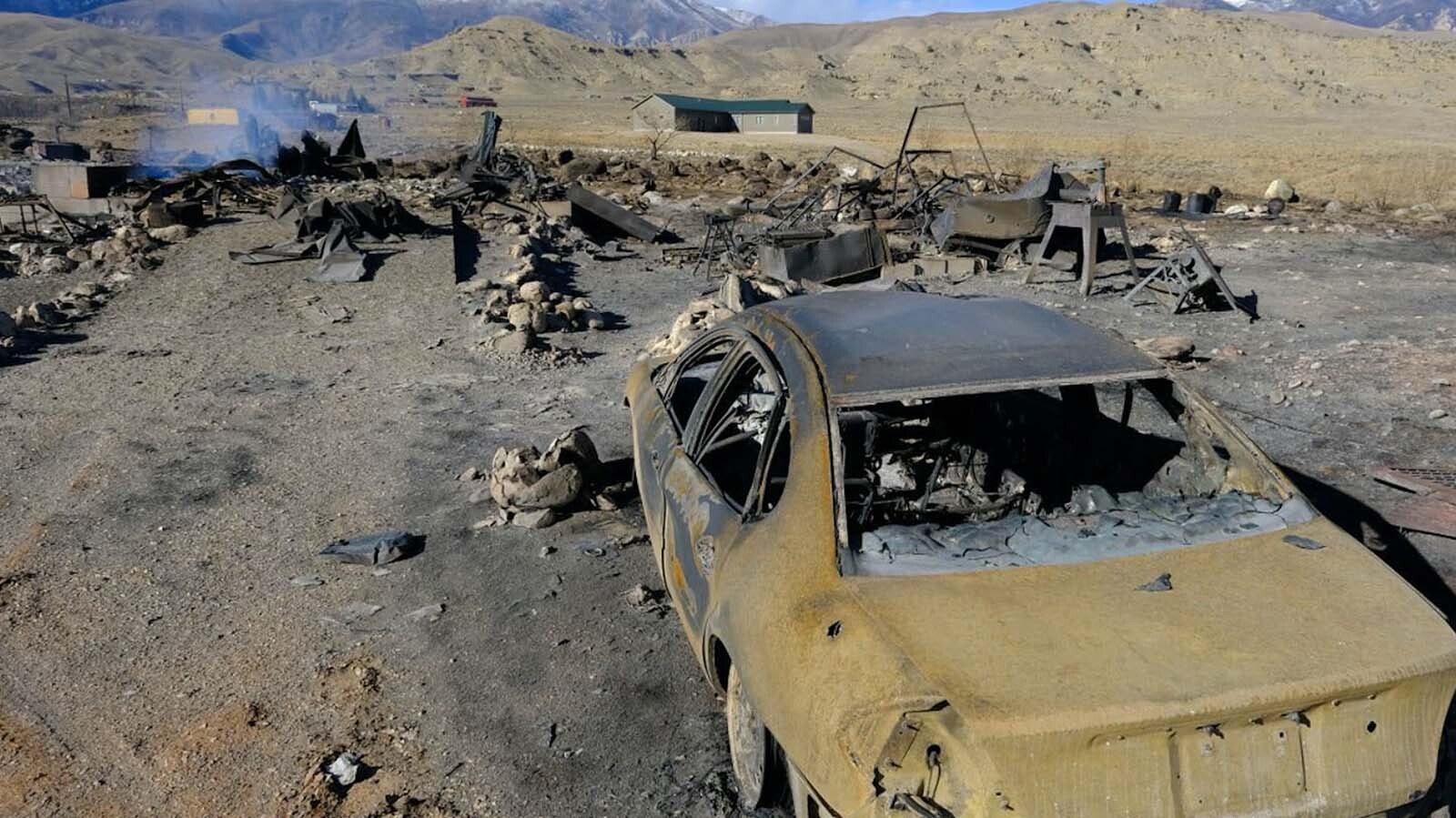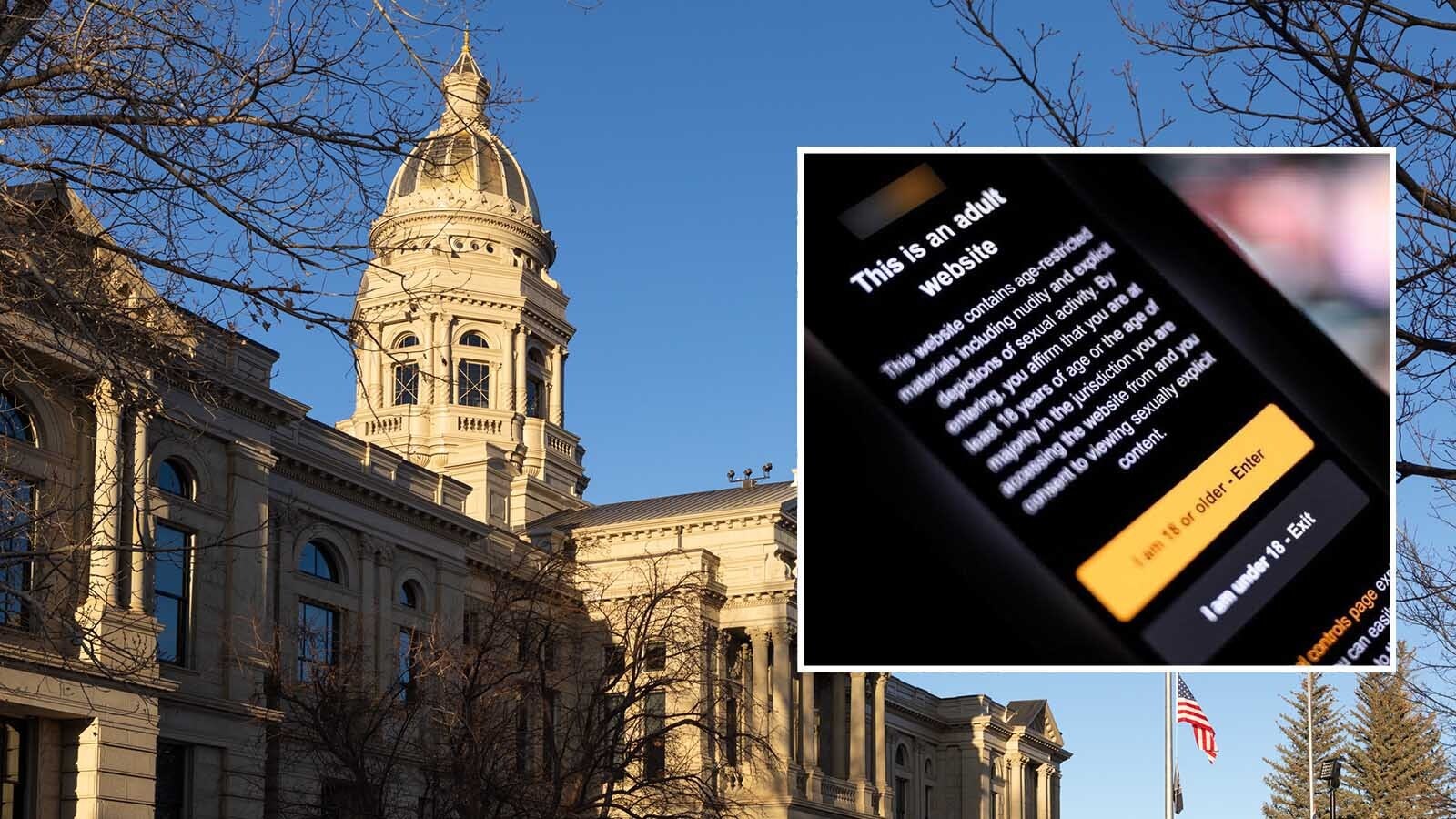A Clark man has provided a detailed investigative analysis showing that a local power company and tree trimming service are most to blame for a devastating 2021 wildland fire that killed his wife.
In late 2022, William Ruth sued Beartooth Electric Co-op. and Asplundh Tree Expert in Wyoming District Court, saying the two companies were negligent, which led to his wife Cynthia Ruth’s death in a wildfire in November 2021.
Last week, Alan Carlson, a California-based wildland investigator hired by Ruth to investigate the fire, delivered an extensive report in which he determined Beartooth and Asplundh were both negligent. Carlson spent more than a week investigating the scene of the fire, delivering a thorough 93-page analysis of the way the fire started, traveled, and burned.
It is the determination of Carlson and other fire experts that high winds caused a power line to make contact with a nearby tree, which led to an arcing burn across the trees. There were exceptionally high winds on the night of the fire, which Carlson believes caused the burn to be cast over to a field some distance away where the wildfire spread.
In court documents, Beartooth has called the event “an act of God” and asked the court to dismiss Ruth’s lawsuit, and also to have Ruth reimburse the company’s legal costs. Asplundh also has denied responsibility and asked that the case be dismissed.
Wind Dominated Destruction
The Clark Fire eventually burned 300 acres, “leaving a long, yet narrow, footprint of destruction consistent with wind-dominated fire progression,” Carlson wrote in his investigative report.
Clark is considered the windiest town in Wyoming and holds the high wind speed record for the state.
Carlson said in his report that weather data from the night of the fire show winds were consistently blowing at 55 mph with gusts as high as 85 mph.
A dramatic change in wind direction “surprised” firefighters, Carlson noted, leading them to abandon efforts to protect structures in the area.
In total, the fire burned two homes, three shops and eight outbuildings. Structural losses were estimated at more than $1 million.
Carlson was retained by Ruth’s attorney to investigate, but did not do his inspection of the fire scene until about five months after the fire.
Placing Blame
In multiple deposition interviews, staff from Beartooth Electric said that they make safety a top priority, a claim Carlson disputed in his report.
He said Beartooth failed to proactively address the risks of high wind and wildland fires in the Clark area by not properly maintaining the powerline that he believes started the fire, a point that an engineer also investigating the fire and hired by Ruth agreed with.
“This failure to take action was a factor in the cause of the Clark Fire,” Carlson wrote.
Although the day of the fire Nov. 15, 2021, was considered a red flag day, a time of particularly high fire risk, Beartooth conducted business as usual that day.
The Clark area had been coming off an unusually hot and dry summer and a warmer-than-normal fall season, but Beartooth took no additional action to mitigate fire risks, Carlson’s report says.
Carlson also wrote that Asplundh employees failed to properly inspect the powerline that led to the fire and Beartooth failed to properly inspect Asplundh’s work.
“If Asplundh had properly inspected and trimmed the subject cottonwood tree, the Clark Fire would not have occurred,” Carlson wrote.
Two Asplundh employees admitted to not properly surveying the tree.
One employee said he had got within 35 feet of the tree and believed it didn’t need trimming after a visual inspection.
Carlson refuted this estimate and said based on the road where the employee said he was standing, he had to have been standing at least 137 feet away.
In early 2022, Beartooth Electric hosted a public meeting in Clark where it presented the results of an investigation performed and paid for by its insurance carrier, Federated Rural Electric Insurance Exchange. That investigator determined Beartooth Electric was not at fault for starting what is also known as the Louis L’Amour Fire.
This report was met with wide skepticism from those in attendance.
Close Quarters
Carlson determined that the failure to maintain a safe and mandatory vegetative clearance between the cottonwood tree’s canopy and the power line led to the ignition of the Clark fire. Contact between the line and the branch resulted in ignition of the tree, which was proven by numerous pieces of evidence on the tree such as charring on its branches.
The distance between the tree and the power line, 6 feet, was less than the minimum required distance as was contractually required between Beartooth and Asplundh. This contract addresses maintaining service for customers but says nothing about the need to prevent wildland fires caused between vegetation and powerline conductors.
On a relatively low wind day when conducting his report, Carlson noted how the conductor still came within less than 5 feet of the tree.
Carlson believes the high winds caused embers and a burning piece of wood to be lifted from the tree and carried on the night of the fire, 143 feet away to dry ground. It was there that the majority of the Clark fire began.
From here, the fire moved east, where it was first observed by Clark Fire District Chief Nate Hoffert and another resident.
The fire eventually overtook Cynthia Ruth’s vehicle, causing her to abandon the Subaru Outback with her pets still inside. Ruth was not able to escape the flames and her body was found nearby. Her animals were unscathed and found inside the vehicle.
Other Factors
The primary fuel supporting the high-intensity fire was sagebrush, while other dry grasses also contributed.
Carlson found that pieces of burning sagebrush were lifted distances more than 150 feet by the strong winds. He writes that the winds also allowed the fire to jump gaps between the sagebrush, which also contributed to the fire’s extremely fast spread.
Carlson says that at one point the fire also traveled down a small creek and toward where Ruth was killed, and noted that Ruth’s view of the fire would have been partially blocked by a ridgeline in the lead up to the fire.
He also criticized prior investigations of the fire saying they did not perform a “systematic and thorough” search of the area.
Conflicting Accounts
In the 2022 report released by an investigator hired by Beartooth Electric, a garbage can was referred to as a possible spark for the fire. Carlson said photographic evidence shows the garbage can was not where the investigator had said it was shortly after the fire. He later went on to call this theory “pure speculation and unsupported by data.”
There was no evidence of any other man-made fires in the origin area, such as campfires, trash burns or cooking materials.
Beartooth Electric has also said in court documents that although the powerline did come in contact with the tree, the fire could not have started this way.
In his report, Carlson mentioned how an arborist hired by one of the defendants in the case determined that black markings on the tree were from sooty fungus and not char. Carlson said this arborist focused on a particular part of the tree to make that determination and ignored char-like structures on a branch located near the powerline.
Carlson writes that the contact made between the conductor and the tree branches was likely why some of the tree’s branches near the powerline died and were devoid of leaves, while other branches nearby still had theirs. A Washington-based licensed engineer and forest resource manager came to the same conclusion.
The companies have until Sept. 15 to submit expert witness testimony, and Ruth will have until Sept. 29 to respond.
Jerry Ruth also filed a wrongful death civil lawsuit in Park County District Court against Asplundh and Beartooth. That case is scheduled for a 12-day jury trial in January 2024.
Leo Wolfson can be reached at leo@cowboystatedaily.com.





